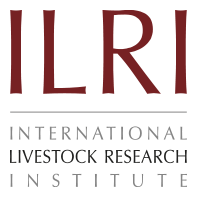Sokoto Gudali
Origin and distribution: Gudali is a Hausa word for "short-horned and short-legged animals". They are also referred to as Fulbe or Peuhl zebu in West and Central Africa. Gudali, classified in the Sahelian Zebu breeds, is believed to have descended from the Indo-Pakistani Zebu, which entered the Horn of Africa by way of the Persian Gulf and south Arabia. Arabian invaders spread the zebu to the south and west over the continent from 669 BC (DAGRIS 2005). It is among the short-horned zebu of West and Central Africa. There are about 5 strains of Gudali namely Sokoto Gudali, Adamawa Gudali, Banyo Gudali, Yola Gudali and Ngaundere Gudali. The Sokoto Gudali is the strain found in Nigeria, northern Benin, Ghana and Mali (Tawah and Rege 1996). The Gudali are principally found in Nigeria, Cameroon and Central African Republic, but a small population also inhabits Ghana.
Physical characteristics: The Sokoto Gudali has multiple coat colours although the most common one is black and white coating with light underside. They have deeper body than the White Fulani breed and resemble East African Boran and the Sudanese Kenana (Tawah and Rege 1996; Rege and Tawah 1999). It is similar in conformation, size and origin to the large East African Shorthorn Zebu. The head is long and wide between the eyes and across the forehead, with a straight or slightly convex facial profile. Ears are long, large and convex, sometimes pendulous, although not to the same degree as in some of the Indo-Pakistan zebus. The hump is thoracic in position. The average height at withers ranges from 130-138 cm for males and 116-132 cm for females (Tawah and Rege 1996).
Peculiarity: About 90% of the Sokoto Gudali are owned and managed by Fulani and Hausa pastoralists and transhumant herders (Ngere 1985), who feed their cattle on communally owned grazing lands and browse especially in the dry season (Tawah and Rege 1996). They are known for their hardiness to the arid northerly environments.
Breed status: Population estimate (DAD-IS 2005) based on breed level survey in 1992 for the Sokoto Gudali in Nigeria and Ghana is 4 400 000 and 10 000, respectively. The breed is not at a risk of disappearance.
Utility: The Sokoto Gudali cattle are known for their meat and milk. Mature weights range from 495-660 kg for males and 240-355 kg for females [CS 1.9 by Aboagye]. They are also reputed for their beef quality. Among the indigenous breeds in Ghana, the highest mean total milk yield of 1101.3 kg in a lactation length of 244.8 days was obtained from the Sokoto Gudali under direct hand and machine milking on station (Tawah and Rege 1996). On the other hand, reproductive performance, in terms of age at first calving, which ranges from mean values of 38.6 to 49.5 months, and calving interval, ranging from 378 to 537 days, is low (Tawah and Rege 1996). The latter is attributed to the ovarian inactivity in the postpartum period and to abortions and stillbirths, whose incidence rate were 4.7-5.9%. Their slow and sluggish nature allows them to be used for draft, including ploughing and carting.
References
DAD-IS, 2005: http://www.fao.org/dad-is
DAGRIS, 2005: http://dagris.ilri.cgiar.org
Felius M. 1995. Cattle breeds: an encyclopaedia. Misset. Doetinchem (The Netherlands). 799 pp.
Ngere L.O. 1985. The Gudali of Nigeria - Review. Animal Genetic Resources in Africa - High potential and endangered livestock. Proceedings of 2nd OAU Expert Committee Meeting, 24-28 November 1983, Bulawayo, Zimbabwe, pp. 77-81.
Rege J.E.O. 1999. The state of African cattle genetic resources I. Classification framework and identification of threatened and extinct breeds. FAO/UNEP Animal Genetic Resources Information Bulletin. 25:1-25.
Rege J.E.O. and Tawah C.L. 1999. The state of African cattle genetic resources II. Geographical distribution, characteristics and uses of present-day breeds and strains. FAO/UNEP Animal Genetic Resources Information Bulletin. 26:1-26.
Tawah C.L. and Rege J.E.O. 1996. Gudali Cattle of West and Central Africa. FAO Animal Genetic Resources Information Bulletin. 17:159-170.
Related Literature
Hanotte O. Tawah C.L. Bradley D.G. Okomo M. Verjee Y. Ochieng J. and Rege J.E.O. 2000. Geographic distribution and frequency of a taurine Bos taurus and an indicine Bos indicus Y specific allele amongst sub-Saharan African cattle breeds. Molecular Ecology.9(4):387-396.
Related websites
http://www.isrvma.org/article/54_2_4.htm
http://www.fao.org/waicent/faoinfo/agricult/aga/AGAP/
FRG/FEEDback/War/t1300b/t1300b0g.htm
http://ourworld.compuserve.com/homepages/
bourn_nord_ergo/Faowarsum.htm
http://www.zod.wau.nl/dps/felius/cb11dlst.html
http://www.tc.umn.edu/~puk/cow/cowworld.html
http://www.tropix.co.uk/themes/cattle/cattle2.htm
http://www.ucd.ie/ascience/html/pages/academic/
dmachugh/downloads/Hanotte_et_al. 2000).pdf
http://www.fao-kyokai.or.jp/edocuments/document2.pdf







